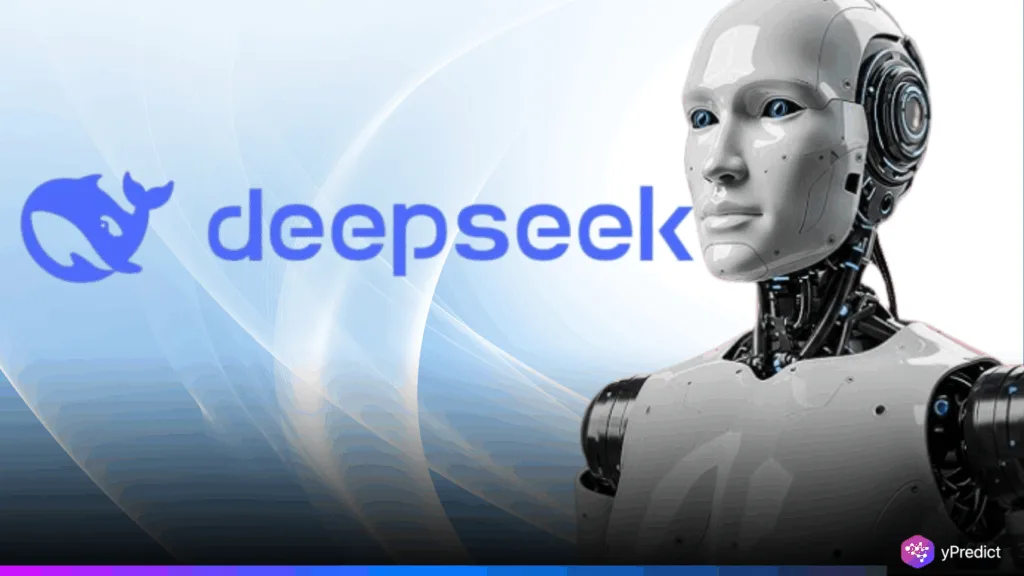
DeepSeek, a Chinese startup founded in 2023, launched its open‑source AI model DeepSeek‑R1 in January 2025. Within six months, it achieved over 140 million global downloads, surpassing ChatGPT on the US Apple App Store. Despite modest hardware (less powerful Nvidia H800 chips) and a cost of around US$6 million, far less than GPT‑4’s US$100 million, researchers trained DeepSeek-R1 to demonstrate impressive performance. Backed by the robust growth in Asia, Africa, and the Middle East, it altered the expectations of the AI development costs. Its success had indirect effects on other markets and brought about increased discussions on the accessibility of AI and its consumption worldwide.
How DeepSeek‑R1 Disrupted Markets Through Cost‑Efficient AI
DeepSeek‑R1’s efficiency is remarkable. Using Nvidia H800 chips, it achieved competitive performance at a fraction of the cost of industry giants. This example shattered the belief that frontier AI models require massive compute budgets or access to bleeding-edge hardware. Its efficient design demonstrated that open-source models can compete effectively in global markets.
Market reactions were swift. On the app front, DeepSeek‑R1 reached the top download slot in the US, posing a direct challenge to OpenAI’s dominance. On the financial side, the launch triggered a staggering $1 trillion stock sell-off, including a $589 billion loss of market capitalization for Nvidia. In response, established players like OpenAI and Google revised pricing strategies, accelerating efforts to make AI more affordable.
Regulatory scrutiny followed. Countries such as Italy and South Korea conducted investigations into privacy and data handling. Despite concerns, DeepSeek continued growing, with downloads concentrated in countries where affordable, AI-powered language access offers clear value. Its global trajectory demonstrated that democratized AI tools can expand access, especially in regions underserved by expensive proprietary models.
Why DeepSeek‑R1 May Democratize AI in Emerging Markets
The success of DeepSeek-R1 has a particular role to play in the Global South. The cheap, highly accessible development demonstrated that super-smart AI does not need corporate budgets of enormous size to achieve performance. In underprivileged areas such as Africa, Southeast Asia, and the Middle East, where capital and infrastructure are scarce, organizations powerfully offered the price and open-source design of AI frameworks that were otherwise out of reach. This can help address digital inequity, taking advantage of use cases such as knowledge translation, as well as the localization of chatbots.
Besides, it is free of cost and its open-source license (MIT) encourages localization and customization. The model can be adapted to other languages such as Swahili or Hindi, and the developers across the world can do so without any limit to license it, creating innovation that serves the local culture best. This stands in contrast to proprietary models, which often lack localized support or raise access barriers.
However, challenges remain. Regulatory concerns continue, and some governments restricted or investigated DeepSeek due to unclear data usage policies. And as cheaper AI becomes widespread, competition with incumbent players intensifies. Nonetheless, DeepSeek’s model highlights a new pathway: scalable AI growth rooted in affordability and openness, not exclusive compute power or corporate monopoly.
DeepSeek‑R1’s Broader AI Innovation Legacy
DeepSeek‑R1’s ascent illustrates a powerful shift in AI development, from high-cost exclusivity to accessible, community-driven innovation. With only US$6 million spent on the training process, it proved that the deterioration of performance should not be linked to the costly infrastructure. Its extensive proliferation, especially in a short period, as well as its wide distribution in the international marketplace, pinpoint a need for cost-effective, flexible AI. DeepSeek, even though corporate and regulatory hurdles loom, also indicated that mainstream AI tools could be constructed and developed with no humongous budgets or centralized control. Its history has the potential to change the direction of AI innovation, emphasizing openness, inclusion, and access to new geographies and industries previously not served by closed-silo, cost-prohibitive frameworks.






